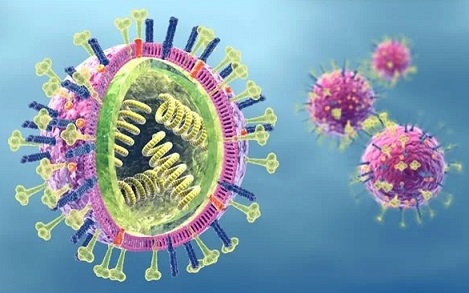Nikhil Prasad Fact checked by:Thailand Medical News Team Jul 12, 2024 1 year, 4 months, 6 days, 9 hours, 29 minutes ago
Influenza News: U.S. CDC Researchers Alert Public to New H1N1 Mutations
Influenza viruses, particularly H1N1, are evolving rapidly, with new mutations making them more resistant to commonly used antiviral drugs like Oseltamivir (Tamiflu). This finding was highlighted in a recent study by scientists from the Centers for Disease Control and Prevention (CDC) in Atlanta, Georgia, USA. This
Influenza News report delves into the significant findings of their research, emphasizing the global spread of these new viral strains and their potential impact on public health.
 New influenza strain showing resistance to popular antiviral drug emerges
The Study
New influenza strain showing resistance to popular antiviral drug emerges
The Study
Researchers from the CDC analyzed influenza A(H1N1)pdm09 viruses collected from May 2023 to February 2024. These viruses, sourced from countries across five continents, exhibited a novel combination of neuraminidase (NA) mutations, specifically I223V and S247N. This combination was found in 101 viruses, predominantly in Europe. The mutations resulted in approximately 13-fold reduced inhibition by Oseltamivir, although the viruses retained normal susceptibility to other antiviral drugs.
Monitoring and Analysis
The CDC routinely monitors antiviral susceptibility of influenza viruses through its national surveillance system. They analyzed the NA sequences of submitted viruses for known mutations associated with reduced drug susceptibility. During the study period, 2,039 pH1N1 viruses from the United States and 38 other countries were examined. Only four of these had the H275Y mutation, which is known to confer resistance to Oseltamivir.
However, the study revealed a higher presence of the I223V and S247N mutations. Eighteen viruses had the I223V mutation, fifteen had the S247N mutation, and seventeen had both mutations. The dual mutants, carrying both I223V and S247N, exhibited significantly reduced inhibition by Oseltamivir.
Global Spread of Dual Mutants
The research team identified that these dual mutants were collected from multiple countries between August and November 2023. Analysis of sequences from the GISAID EpiFlu database showed that these mutants had spread globally, with significant detections in the Netherlands, France, Bangladesh, Oman, and the United Kingdom.
The phylogenetic analysis indicated that most single S247N mutants belonged to subclade C.5 or the more abundant subclade C.5.3. Dual mutants emerged from two separate introductions of the S247N mutation in the I223V mutant branch, forming distinct groups. Group 1, which included dual mutants from six countries, had an additional R257K substitution, while Group 2 encompassed dual mutants from countries with multiple detections.
Hemagglutinin Phylogenetic Analysis
Further analysis of the hemagglutinin (HA) protein revealed two major HA clades during the study period: 6B.1A.5a.2a and 6B.1A.5a.2a.1. Most group 1 dual mutants had HA from 5a.2a_C.1, represented by the A/Sydney/5/2
021 virus, while group 2 dual mutants predominantly had HA from 5a.2a.1_C.1.1.1, represented by the A/Victoria/4897/2022 virus. This reassortment likely contributed to the spread and persistence of these dual mutants.
Implications for Public Health
The study highlights the importance of continuous monitoring and surveillance of influenza viruses. The rapid spread of these dual mutants across continents suggests that they have not lost their replicative fitness or transmissibility. The I223V mutation was shown to alter NA activity, and the S247N mutation may have a similar effect, potentially enhancing drug resistance when combined with other mutations.
Conclusion
The emergence of influenza A(H1N1)pdm09 viruses with dual I223V and S247N mutations presents a significant challenge for public health. These mutations reduce the efficacy of Oseltamivir, a widely used antiviral drug. The study emphasizes the need for close monitoring of these dual mutants, as further changes could impact their susceptibility to antiviral drugs or provide a competitive advantage over other circulating viruses.
The study findings were published in the peer-reviewed journal by the U.S. CDC: Emerging Infectious Diseases.
https://wwwnc.cdc.gov/eid/article/30/7/24-0480_article
For the latest
Influenza News, keep on logging to Thailand Medical News.
Read Also:
https://www.thailandmedical.news/news/herbs-and-phytochemicals-fermented-codonopsis-lanceolata-root-extract-shows-promise-against-influenza-a-virus
https://www.thailandmedical.news/news/traditional-chinese-medicine-s-rujin-jiedu-decoction-a-new-hope-for-influenza
https://www.thailandmedical.news/news/breaking-gut-molecule-indole-3-propionic-acid-ipa-shows-promise-in-fighting-all-types-of-influenzas
